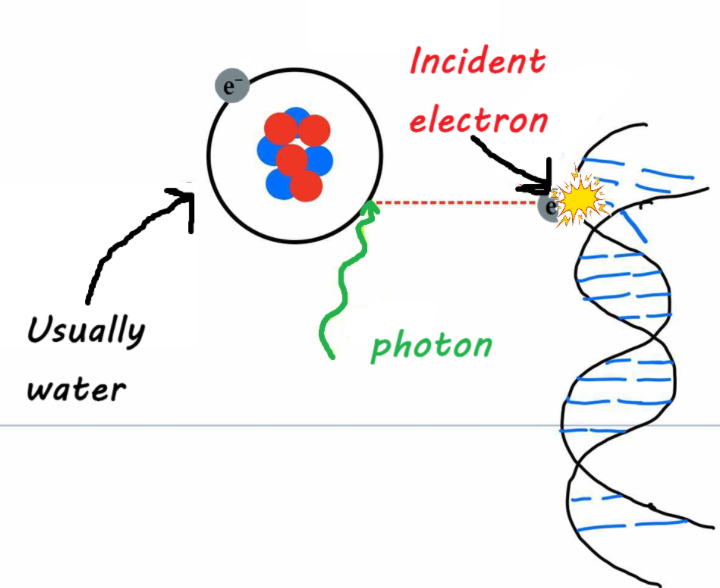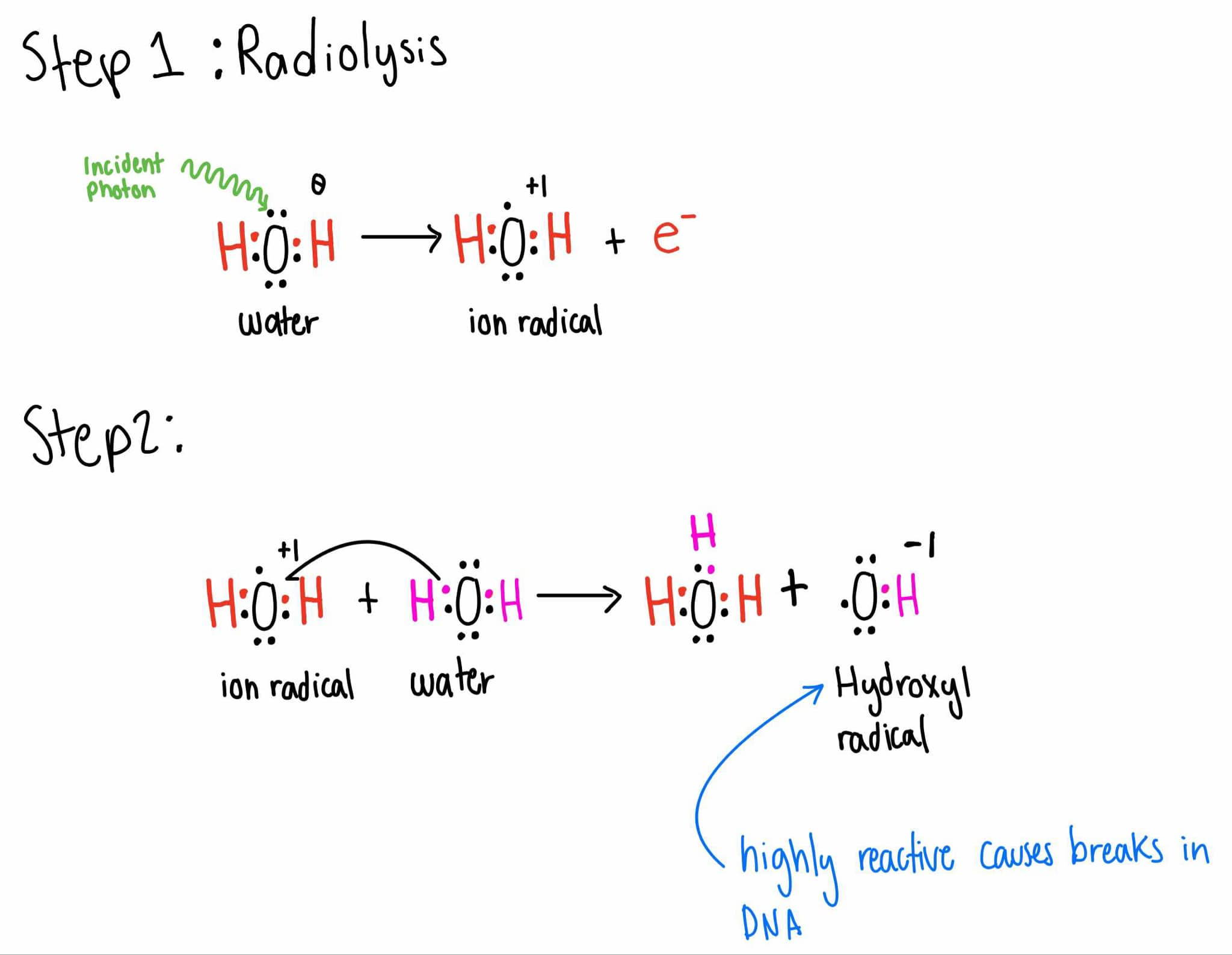Part 3: Direct and Indirect Effects of Radiation at the Molecular level & Target Theory
1/12
There's no tags or description
Looks like no tags are added yet.
Name | Mastery | Learn | Test | Matching | Spaced |
|---|
No study sessions yet.
13 Terms
True or False: Radiation can be directly ionizing or indirectly ionizing
True!
describe the Direct Effect of Radiation on DNA
photon ionizes an atom (usually H2O), ejecting an electron
the recoil electron causes a break in the DNA molecule

True or False: Waves cannot ionize directly
True
describe the Indirect Effect of Radiation on DNA
Step 1: Radiolysis
The incident photon ionizes a water molecule producing H2O+, an ion radical, & an electron
H2O+ combines with a normal H2O molecule producing H3O+ & OH*. a hydroxyl free radical, which is HIGHLY reactive and readily causes breaks in the DNA molecule

Which effect is far more COMMON & IMPORTANT?
Direct
Indirect
Both equally as common and important
Direct
__% of radiation damage (to DNA) is due to free radical production
95

2 Things that can happen to the Hydroxyl Free Radical:

How does the hydroxyl free radical form hydrogen peroxide?
It can easily be formed from the process of radiolysis
Effect of hydrogen peroxide on cells?
Toxic to cells
Why is the indirect effect more common than the direct effect?
Due to the ABUNDANCE of water molecules and the odds of producing free radicals.
Free radical and their harmful effects are much greater than the odds of a recoil electron striking the DNA molecule (i.e. direct effect)
Term. Target Theory
def. states that the most radiosensitive sites of the cell are in the nucleus
What is the target molecule?
DNA (cuz it’s so big = more likely to be hit)
True or False: We only aim the radiation at the nucleus of the cell, no other organelle gets due to their small size (compared to DNA molecule)
False: Radiation can affect structures in the cytoplasm. (e.g. mitochondria, lysosomes) impairing cell function or killing the cell, BUT the best TARGET MOLECULE is DNA